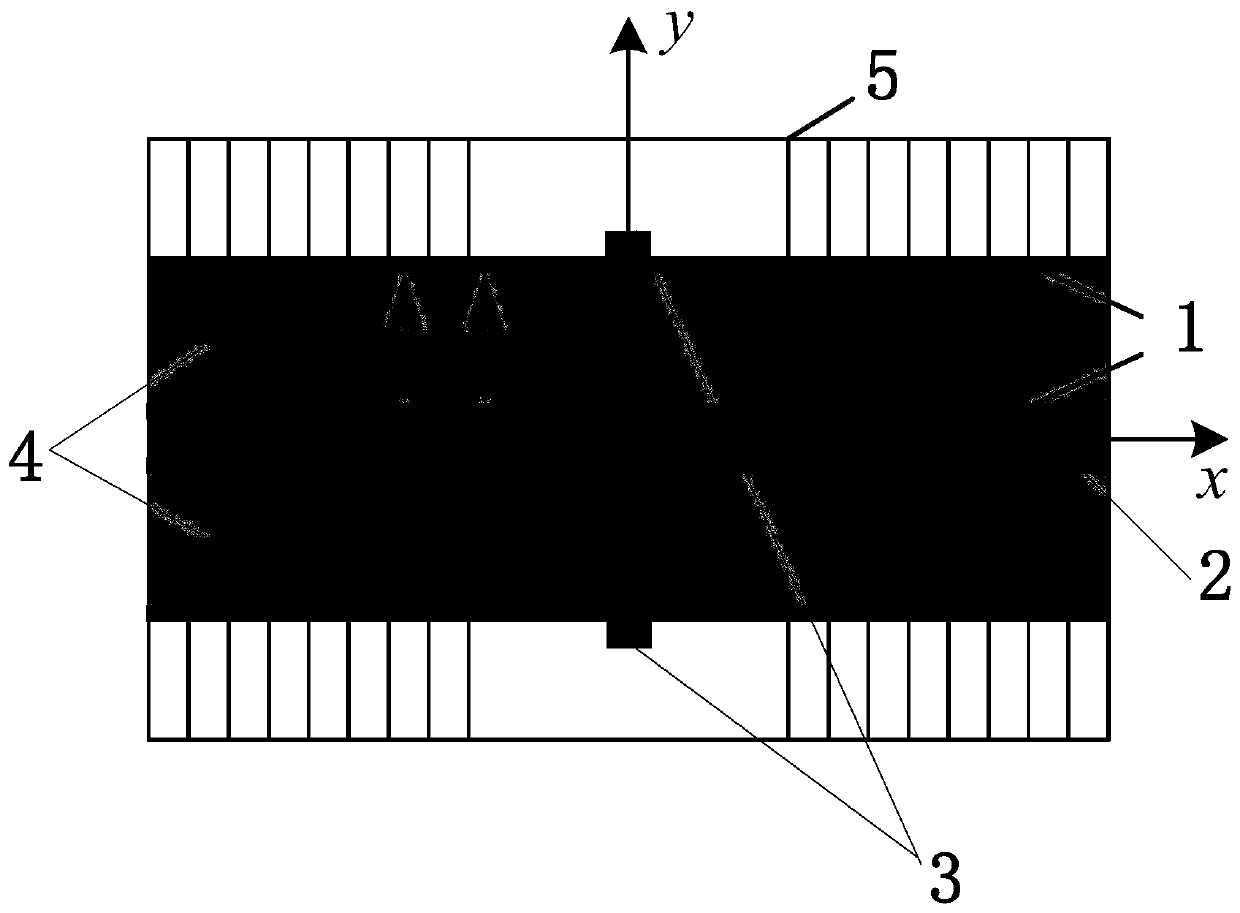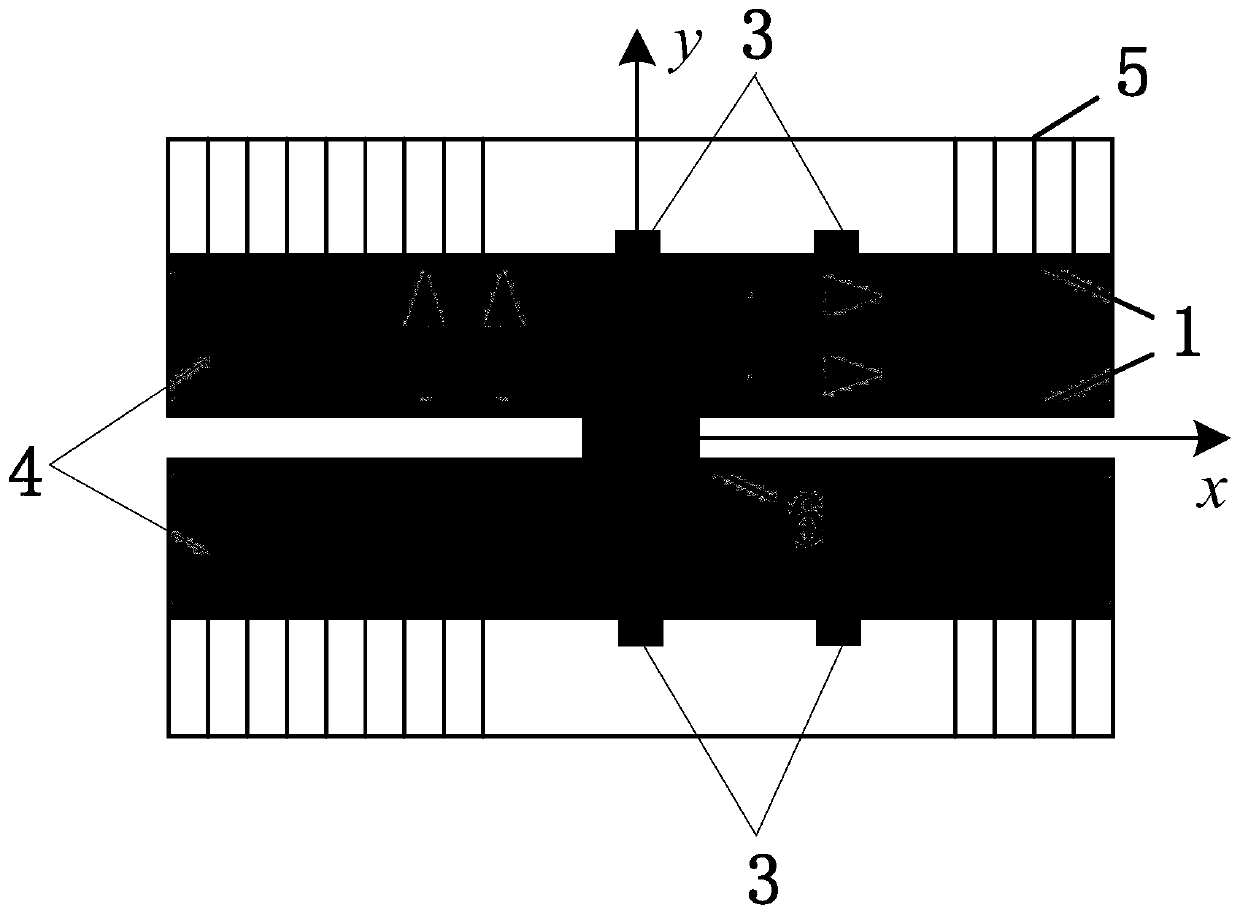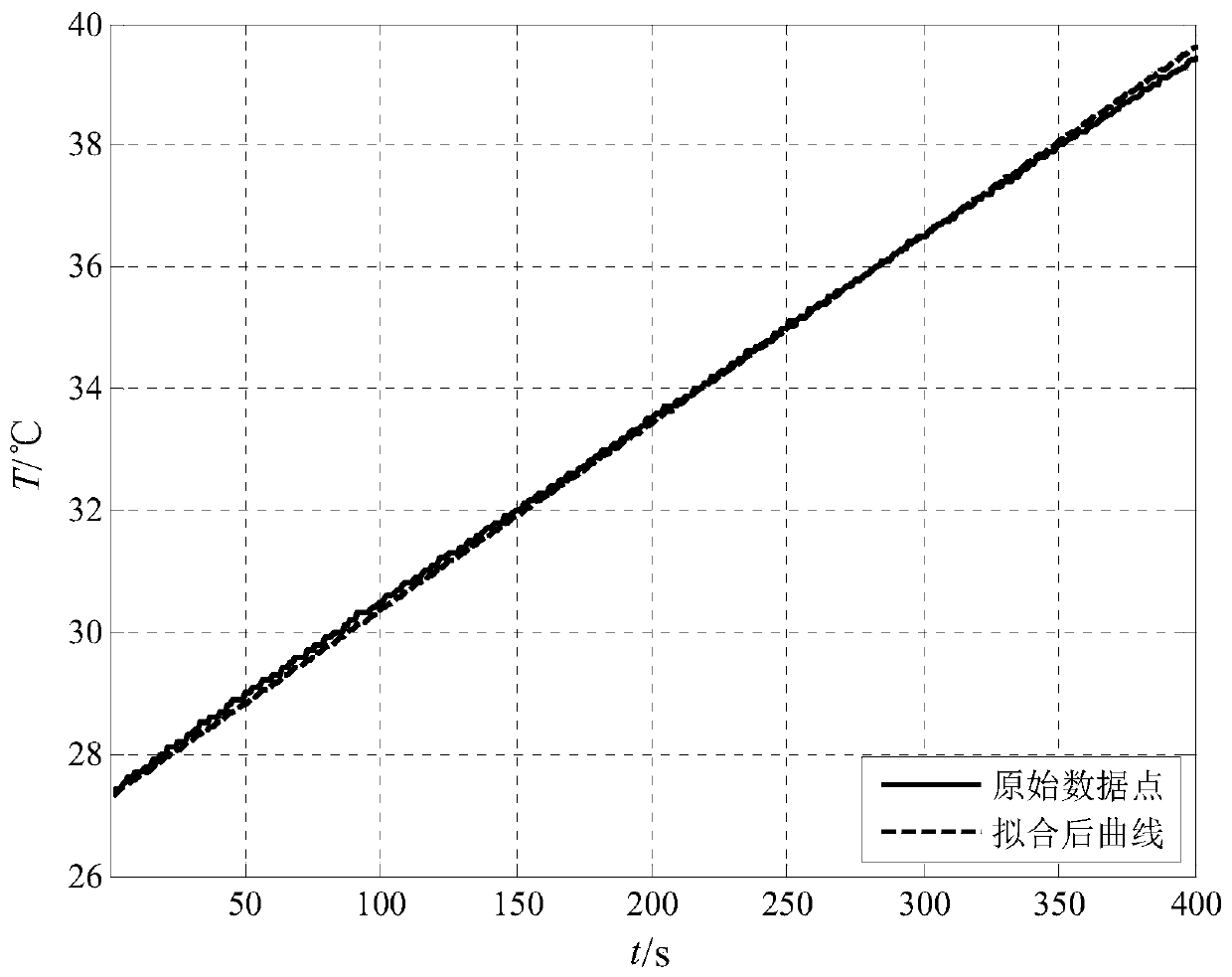Square lithium ion battery internal thermophysical parameter identification method
A technology for lithium-ion batteries and thermophysical parameters, which is applied in secondary batteries, circuits, electrical components, etc., can solve the problems of inability to identify the thermal physical properties of batteries, and achieves easy and convenient acquisition and calculation, and ensures the accuracy of experimental measurement. Effect
- Summary
- Abstract
- Description
- Claims
- Application Information
AI Technical Summary
Problems solved by technology
Method used
Image
Examples
specific Embodiment approach 1
[0029] Specific implementation mode one: refer to figure 1 and figure 2 This embodiment is specifically described. The method for identifying thermal and physical parameters inside a square lithium-ion battery described in this embodiment includes the following steps:
[0030] Step 1. Place the square heater (2) between two square lithium-ion batteries of the same type, and place a thermocouple at the center of the two battery casings to detect the temperature, and place the square heater (2) ), two square lithium-ion batteries and two thermocouples are placed in an adiabatic environment, thereby simplifying the heat transfer process into a one-dimensional heat conduction process along the thickness direction of the battery;
[0031] Step 2. According to the quality of two square lithium-ion battery shells, the constant pressure specific heat capacity of the battery shell, the internal mass of the battery, the heating power of the battery and the temperature of the battery a...
specific Embodiment approach 2
[0046] Specific embodiment 2: This embodiment is to further explain the identification method of thermal physical property parameters inside the square lithium-ion battery described in specific embodiment 1. In this embodiment, in step 2, the specific heat capacity C at constant pressure inside the battery is obtained P2 The specific process is:
[0047] Place a thermocouple in the center of the two battery cases to detect the temperature change of the battery case. According to the relationship between the case on both sides of a lithium-ion battery and the internal mass m and the temperature with the heating time:
[0048]
[0049] Obtain the constant pressure specific heat capacity C P ,
[0050] In the formula, Q is the heat absorbed or released, and ΔT is the change in temperature;
[0051] Considering that the thermal parameters of the battery casing and the interior are different, there is a formula:
[0052]
[0053] In the formula, m 1 with m 3 are the mass...
specific Embodiment approach 3
[0057] Specific embodiment 3: This embodiment is to further explain the identification method of thermal physical property parameters inside the square lithium-ion battery described in specific embodiment 1. In this embodiment, the size of the square heating plate in step 1 is in contact with the lithium-ion battery Face size is the same.
[0058] In this embodiment, the use of a square heating sheet consistent with the size of the side of the battery can shield the lateral thermal conductivity when identifying the longitudinal thermal conductivity, simplifying the entire heat conduction process to one-dimensional heat conduction.
PUM
 Login to View More
Login to View More Abstract
Description
Claims
Application Information
 Login to View More
Login to View More - R&D
- Intellectual Property
- Life Sciences
- Materials
- Tech Scout
- Unparalleled Data Quality
- Higher Quality Content
- 60% Fewer Hallucinations
Browse by: Latest US Patents, China's latest patents, Technical Efficacy Thesaurus, Application Domain, Technology Topic, Popular Technical Reports.
© 2025 PatSnap. All rights reserved.Legal|Privacy policy|Modern Slavery Act Transparency Statement|Sitemap|About US| Contact US: help@patsnap.com



